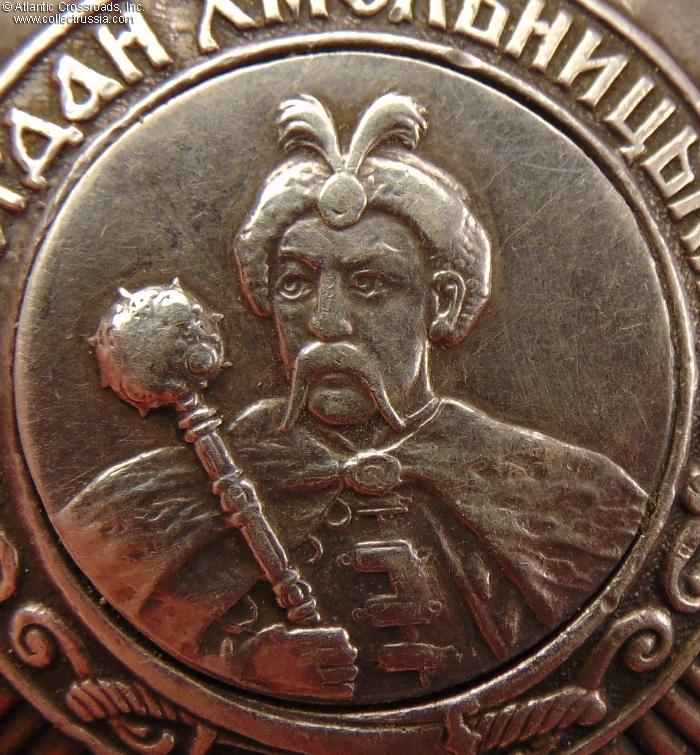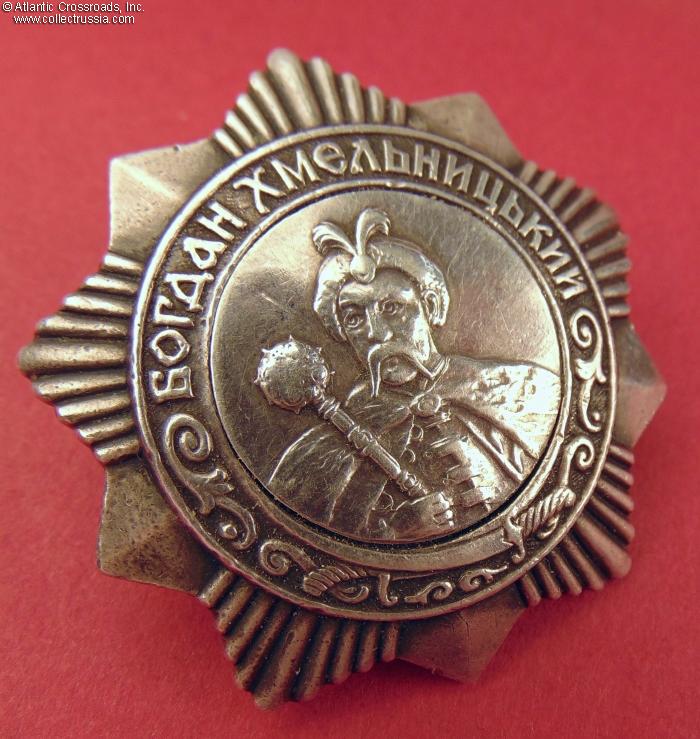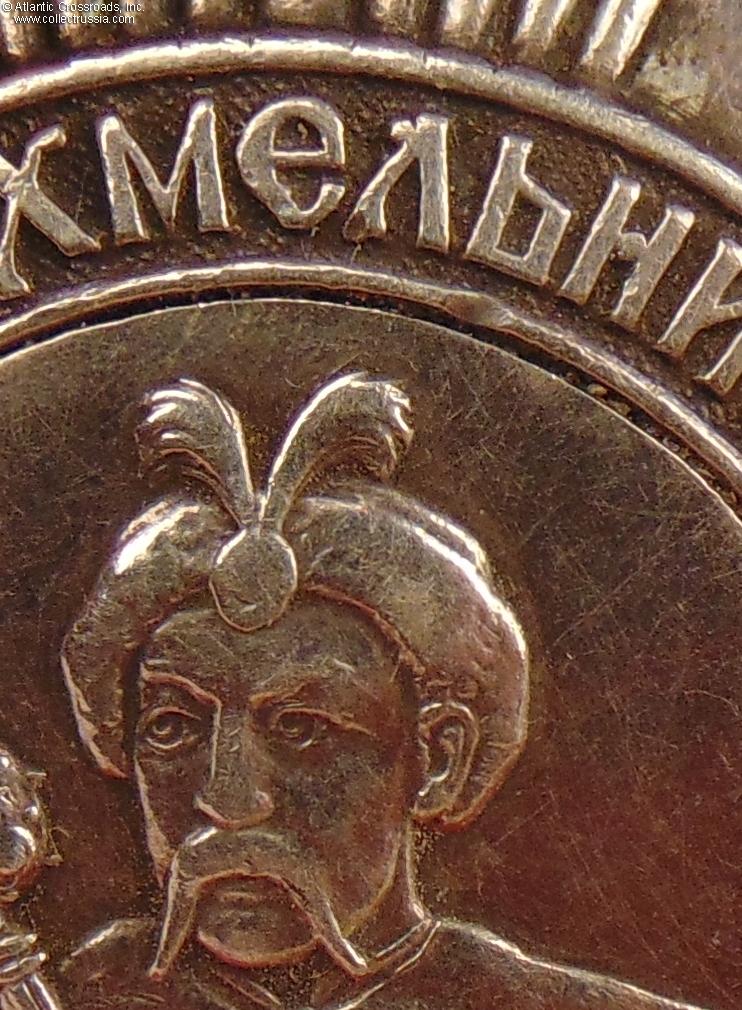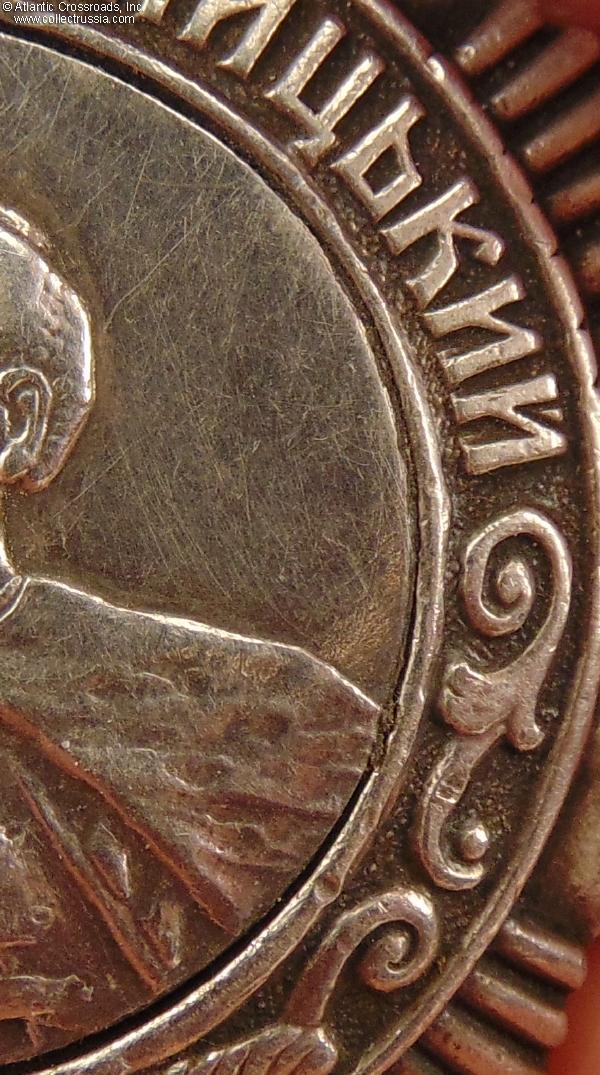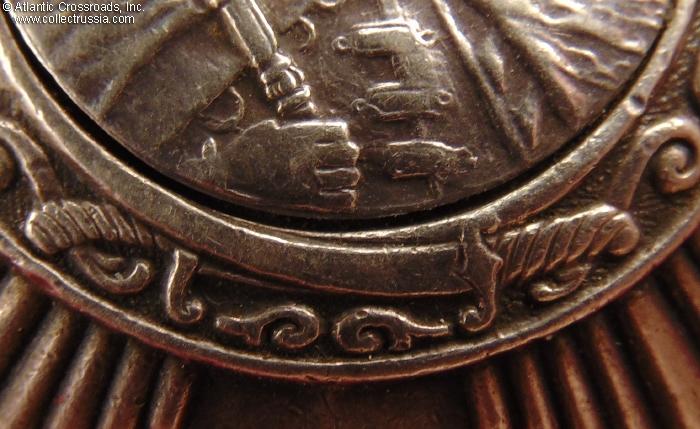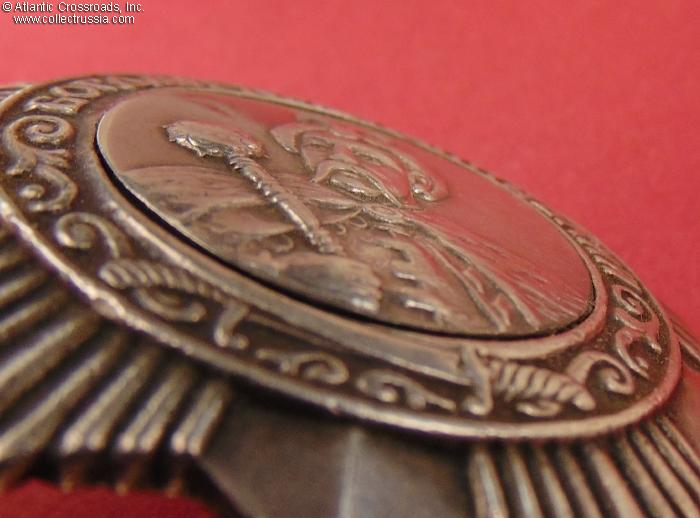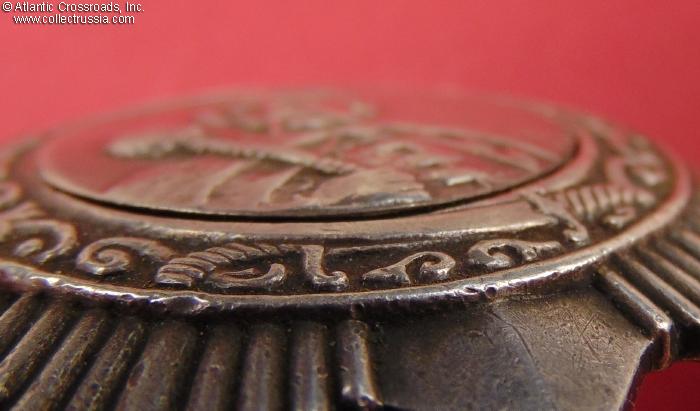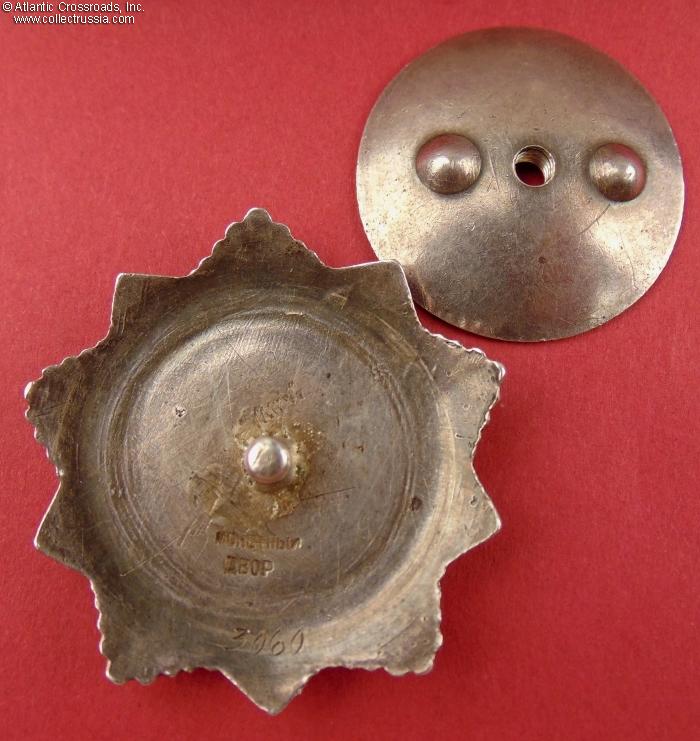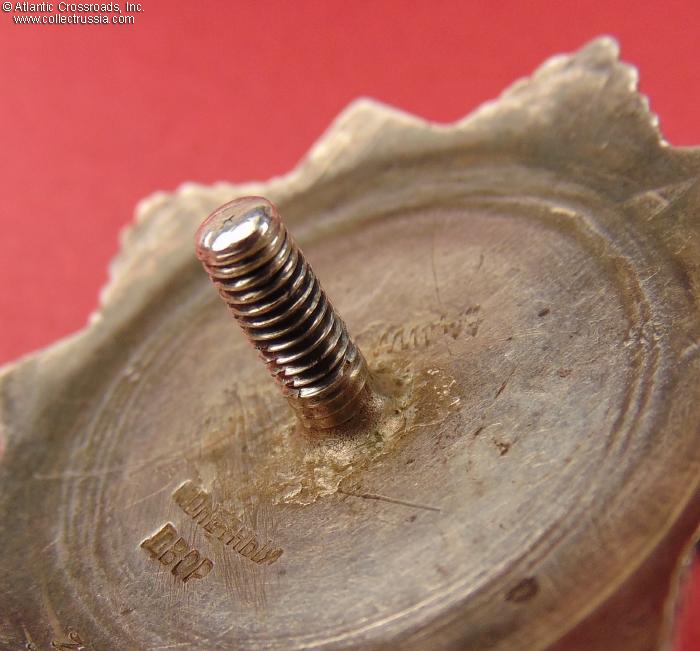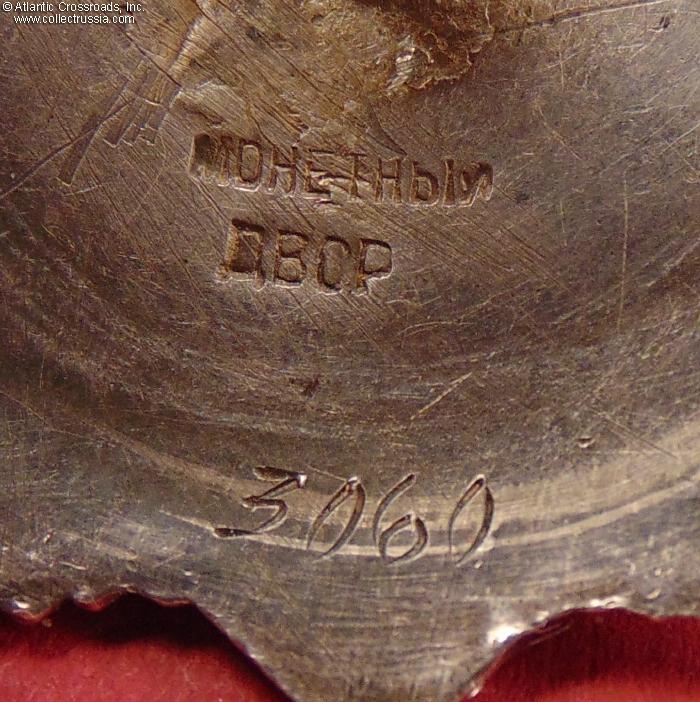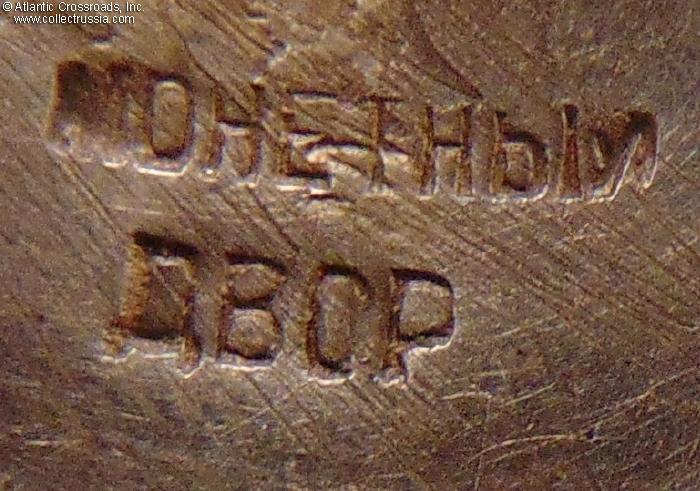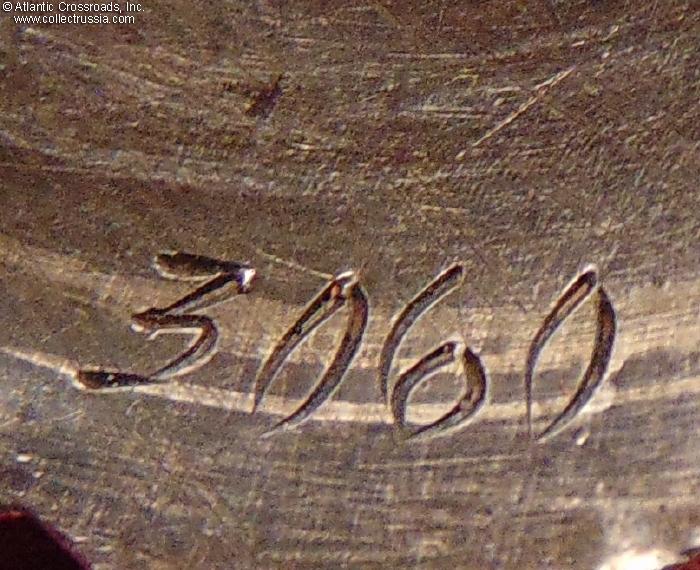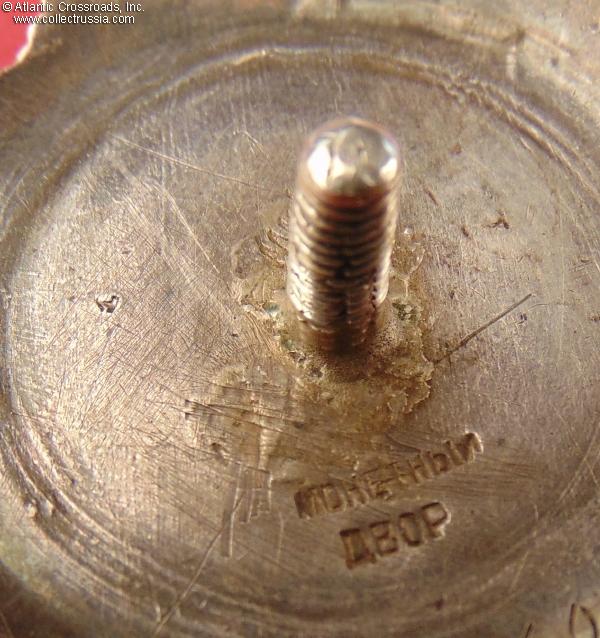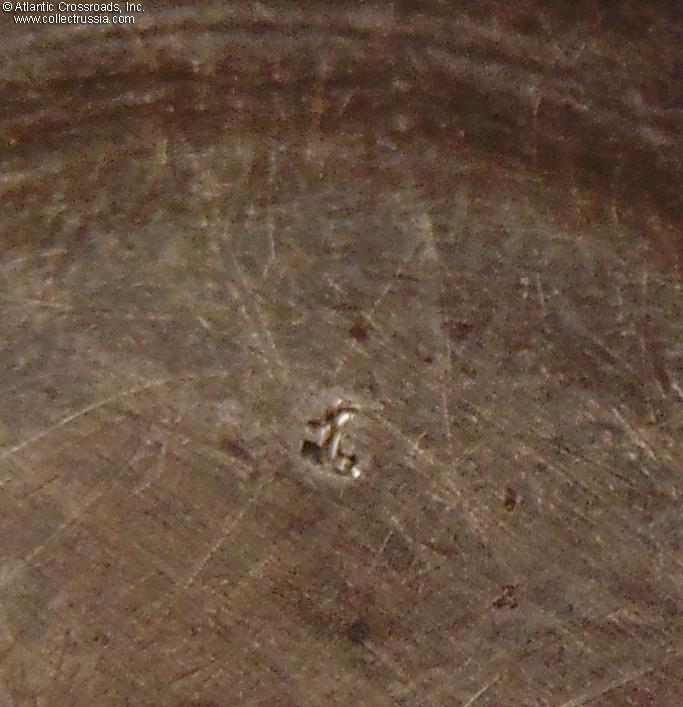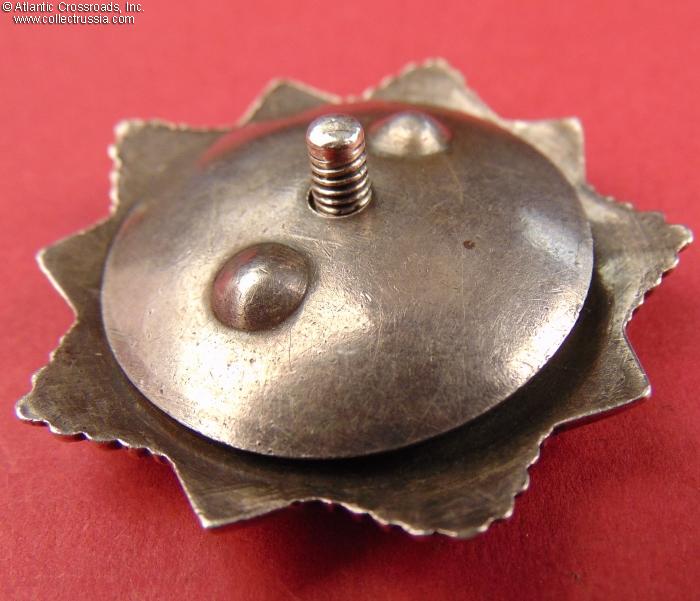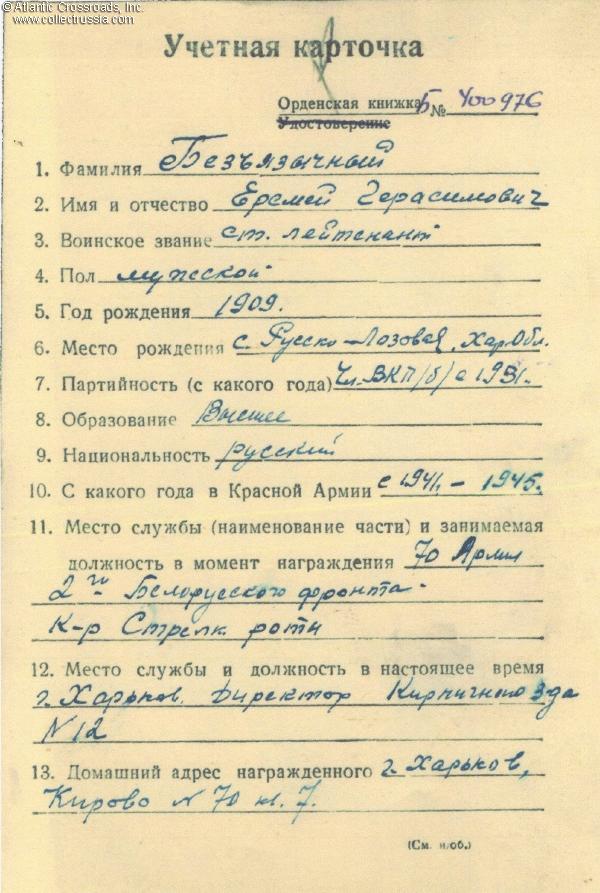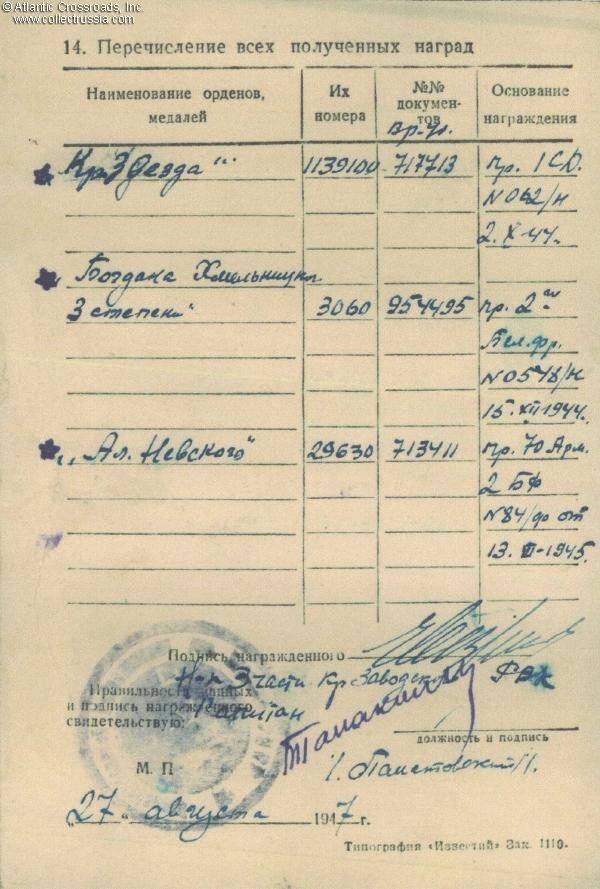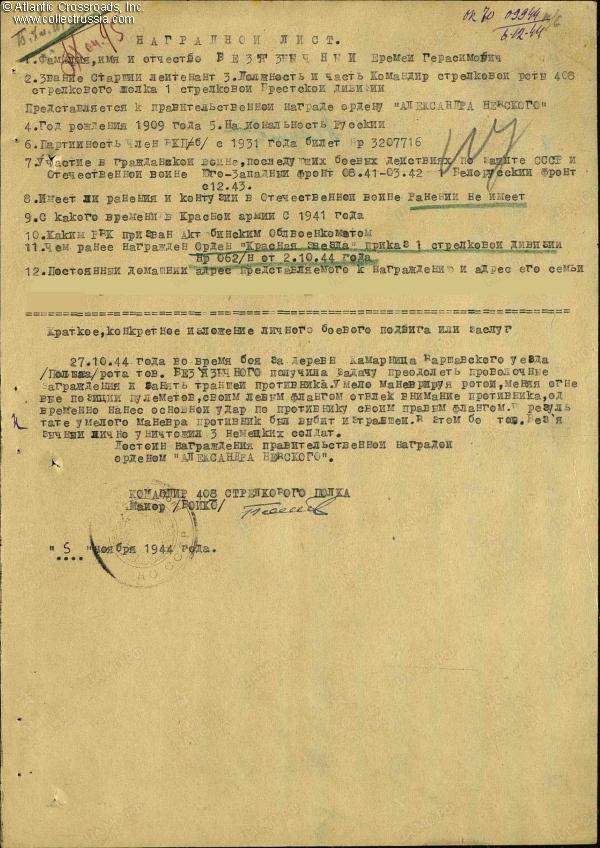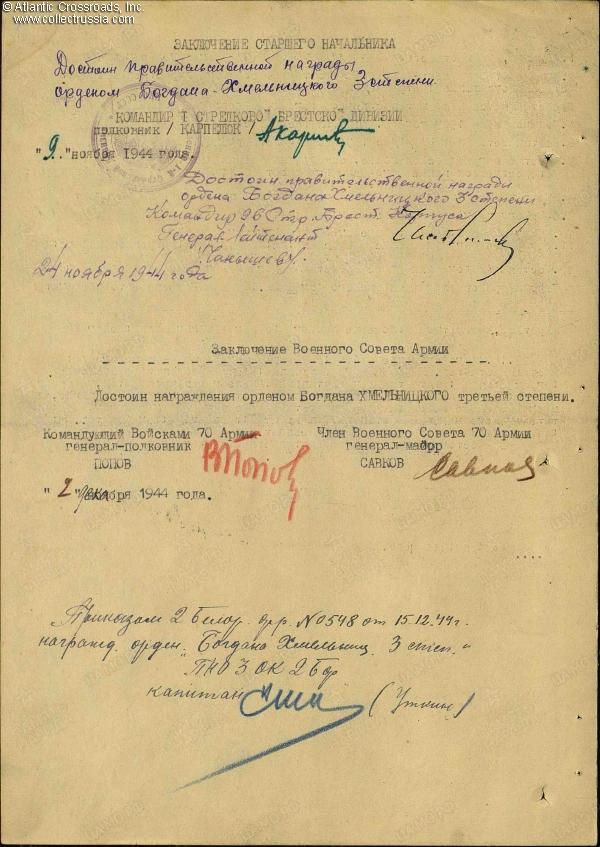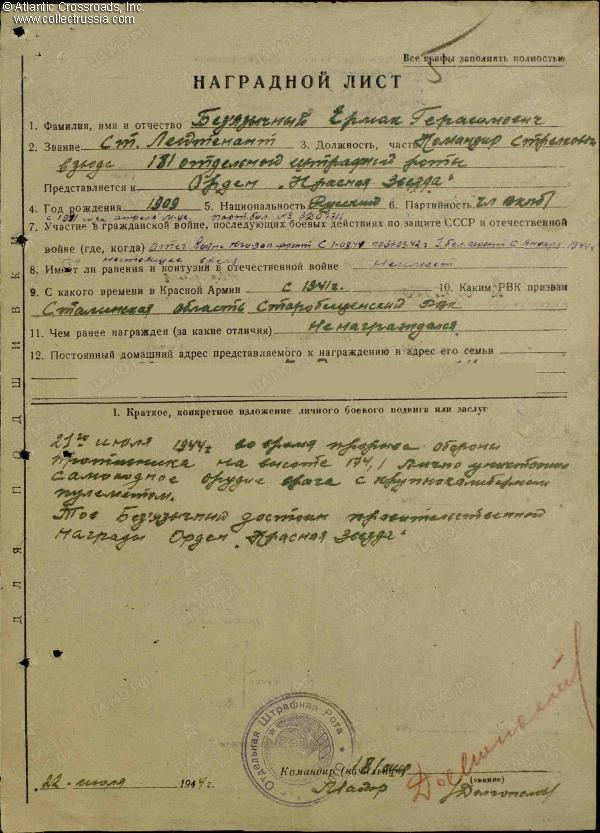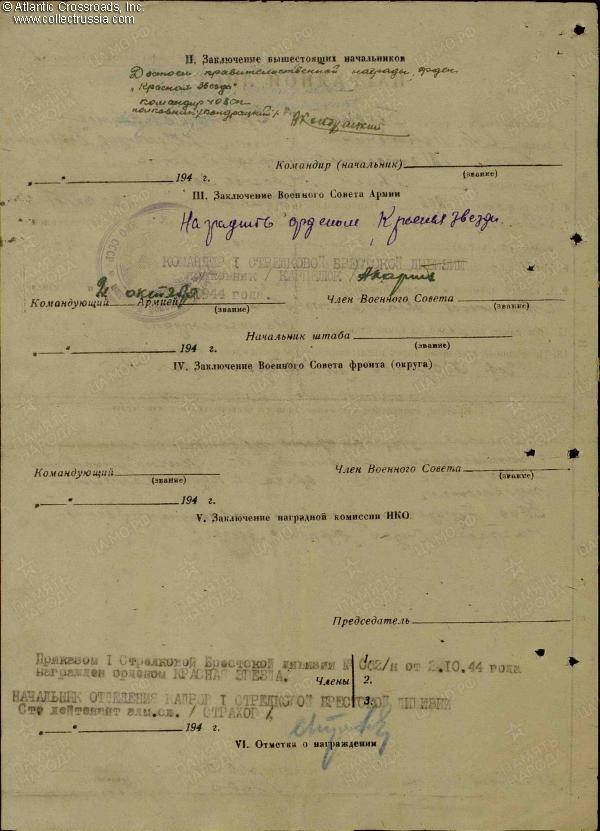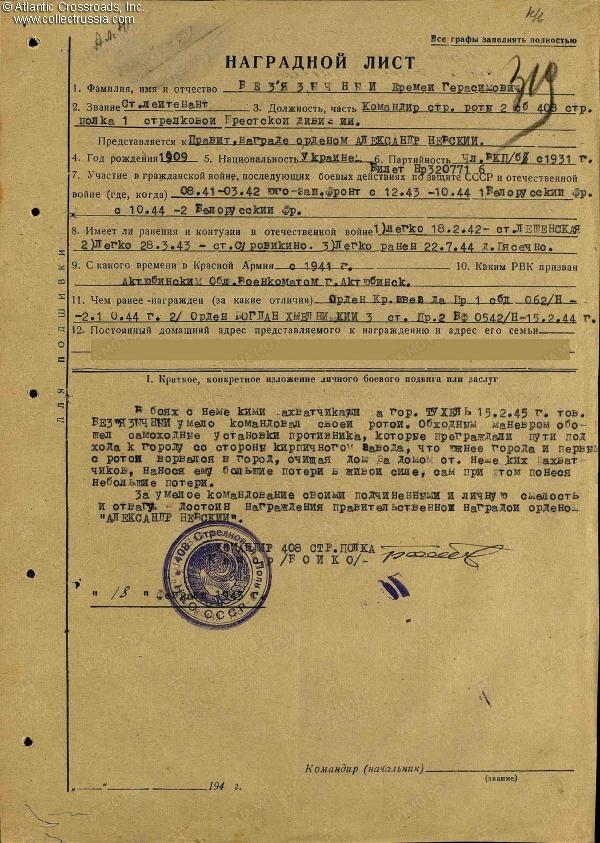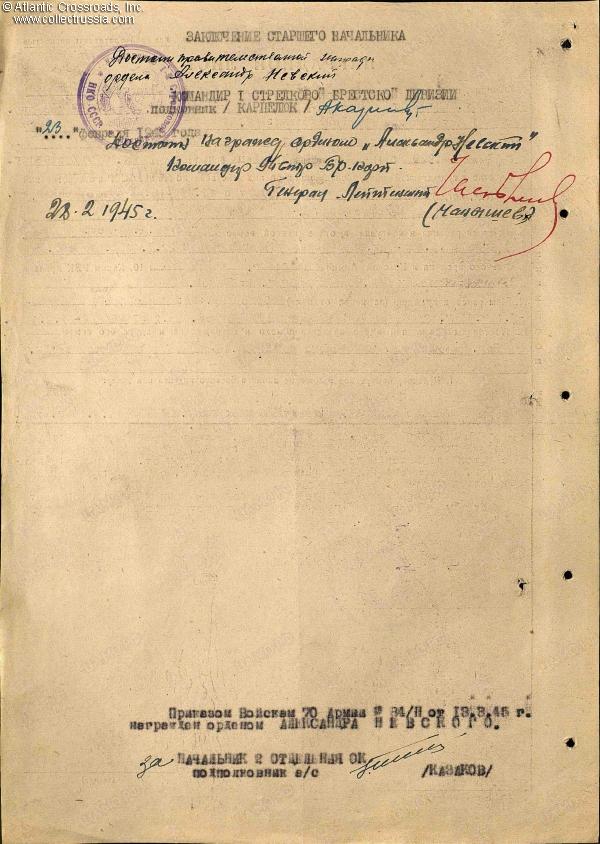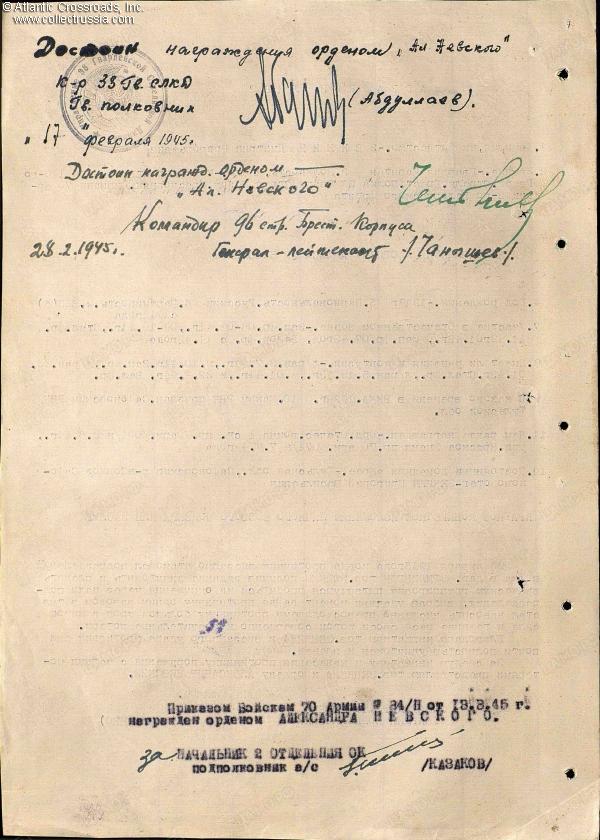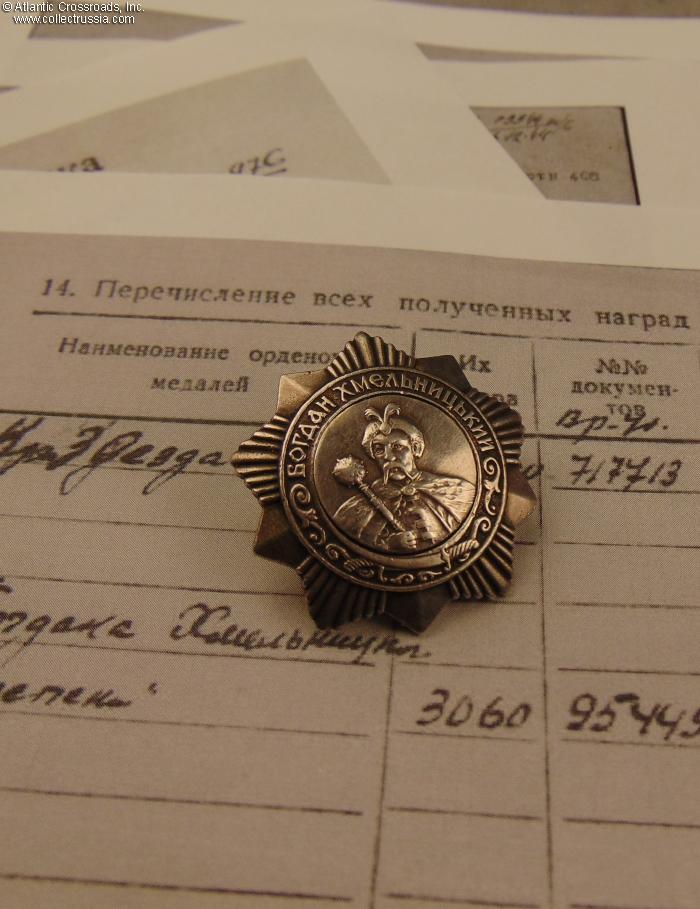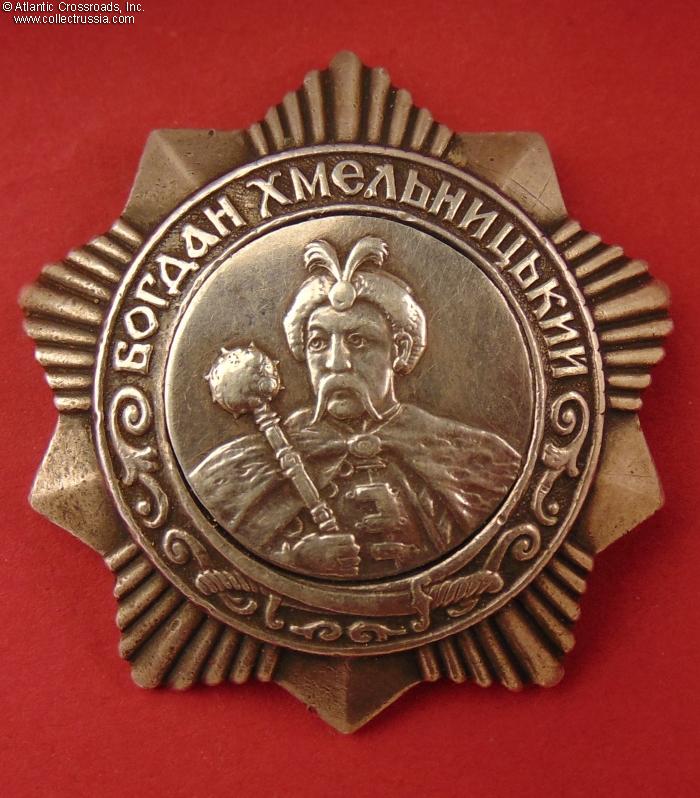
Order of Bogdan Khmelnitsky, 3rd class, Type 1, #3060, awarded on 15 December 1944 to Senior Lieutenant Yeremey Bezyazychnyi (Еремей Герасимович Безъязычный), rifle company commander, 408th Rifle Regiment, 1st Rifle Division, 70th Army, 2nd Belorussian Front.
In silver; measures 44.9 mm in height, 43.2 mm in width; weighs 30.3 g without the screw plate. Type 1, featuring a separate, soldered center medallion. The right saber does not have a dot on the blade near the hilt found on other variations. The reverse has a small stamped maker mark "1" approximately halfway between the edge and screw post at 8 o'clock position. The serial number is engraved in the standard manner at 6 o'clock.
Very fine to excellent condition. There is a small dent to the recessed background of the center medallion to the left of Khmelnitsky's head, whi
In silver; measures 44.9 mm in height, 43.2 mm in width; weighs 30.3 g without the screw plate. Type 1, featuring a separate, soldered center medallion. The right saber does not have a dot on the blade near the hilt found on other variations. The reverse has a small stamped maker mark "1" approximately halfway between the edge and screw post at 8 o'clock position. The serial number is engraved in the standard manner at 6 o'clock.
Very fine to excellent condition. There is a small dent to the recessed background of the center medallion to the left of Khmelnitsky's head, which is not too detractive. This is really the only noticeable flaw of this otherwise beautifully preserved piece. In particular, the raised details of the bas-relief portrait show no significant wear and are extremely crisp, nearly pristine. The arms of the star and rays of the starburst have only some minuscule contact marks, no significant scratches or edge knocks.
There is a very attractive even patina to silver on both sides. The screw post is full length of approx. 12 mm and comes with an original period screw plate in silver. Overall, a very attractive example, especially considering that this decoration was often issued to lower ranks than the other Soviet "commander's orders" (its third class was the only one among them that could be bestowed even upon a private!)
Yeremey Bezyazychnyi was born in 1909 in a village of Kharkov Region and in 1931, joined the Communist Party. He served in the Red Army starting from the first year of the war and took part in combat starting from August 1941, initially under the Southwestern Front.
Bezyazychnyi earned his first decoration in July 1944 during the Bagration Offensive in Belorussia. At the time already a senior lieutenant, he commanded a platoon of a Penal Company of the 1st Rifle Division, 70th Army, 2nd Belorussian Front - an unenviable command position in what was essentially a suicide unit, one of many such punishment companies made out of convicted criminals and deserters. (These were quite different from penal battalions that were mostly composed of former officers who got court-martialed and given a chance to redeem themselves. Unlike penal companies, the battalions typically enjoyed good morale, often had decent equipment and weapons, and were even considered something of an elite assault force. The far more numerous penal companies, on the other hand, were treated as nothing more than cannon fodder and were typically sent to die in human wave attacks.)
On 21 July - almost exactly a month after the start of the Operation Bagration - Bezyazychnyi took part in an assault on an enemy hilltop position and personally destroyed a self-propelled gun and heavy machine gun. On 2 October 1944, he was decorated for this feat with an Order of the Red Star (#1139100).
Probably due to his bravery while commanding a platoon in a penal company, Sr. Lt. Bezyazychnyi was transferred to "normal" infantry and given command of a rifle company of the 408th Rifle Regiment in the same 1st Rifle Division. On 27 October 1944, his company received the task of breaking through barbed wire obstacles and capturing enemy trenches in the vicinity of Warsaw. Skillfully maneuvering and changing firing positions of his machine guns, Bezyazychnyi distracted the enemy with his left flank while launching a decisive strike with the right flank and capturing the trenches. In this skirmish he personally eliminated three German soldiers. On 5 November 1944, he was recommended for the Order of Alexander Nevsky by his regiment commander. The division commander then upgraded the award to the Order of Bogdan Khmelnitsky, 3rd cl. which was bestowed upon Bezyazychnyi on 15 December by a general order of the 2nd Belorussian Front.
Bezyazychnyi earned the Order of Alexander Nevsky, his last decoration of the war, in northern Germany during the Eastern Pomeranian offensive. On 15 February, he maneuvered his company around the enemy assault guns protecting the southern approaches to the town of Tuchel (now Tuchola, Poland) southwest of Danzig. He and his company were the first to break into the town clearing its buildings one by one of the entrenched German troops. In this skirmish Bezyazychnyi inflicted significant losses on the enemy while suffering few casualties among his own men - a textbook requirement for the Order of Alexander Nevsky, which was awarded to him on 13 March 1945 (#29630). He was wounded in combat in May 1945 at the very end of the war and retired from the military soon thereafter following a convalescence in a military hospital. As of August 1947, he resided in Kharkov where he worked as a director of a brick factory.
Research Materials: photocopy of the award record card and award commendations for the Order of Bogdan Khmelnitsky, 3rd cl. and the
other two wartime decorations.
$3,600.00 Add to cart

